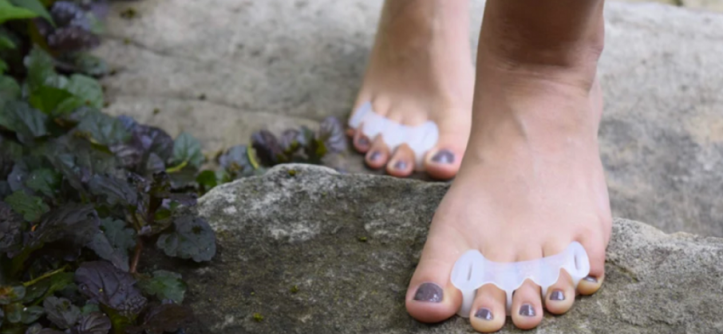If you suffer from pain or discomfort in your toes and feet, you may be struggling to find a solution. There are dozens of over the counter remedies, from foot creams and special shoes to orthopedic inserts and toe spacers.
With so many options, it can be hard to know which one is right for you. In this article, we’ll compare two popular solutions: toe separators and insoles. You’ll learn what each of them are and in which situations they’re appropriate.
What Are Toe Separators or Spacers?
Toe separators, also sometimes called toe spacers, are small devices that fit between your toes. There are different kinds of toe spacers, with some going in between just one or two of your toes and others that fit around all of your toes.
They’re generally made from gel, silicone, foam, or fabric and are designed to stretch your toes apart slightly. This can provide relief if you suffer from conditions like bunions, hammer toe, blisters between your toes, or overlapping toes. It can also help to prevent these conditions by keeping your toes properly aligned.
What Are Toe Spacers Used For?
Toe separators are most commonly used to treat conditions that affect the toes. These include bunions, hammer toe, blisters between your toes, or overlapping toes.
Toe spacers can prevent and provide relief for these conditions by forcing the toes to stay in alignment and promoting strength, blood flow, and flexibility to the toe joints.
What Are Insoles?
Insoles are devices that you insert into your shoes, underneath your feet. They come in a variety of shapes and sizes to fit nearly any type of shoe, from sneakers and sandals to high heels.
Insoles can be made of different materials that provide different levels of cushion and support. Some popular options include gel, silicone, and moleskine. They also can be made to provide support in different areas of the foot. Some insoles are focused on adding support to the arch, while others are designed to reduce heel pain.
What Are Insoles Used For?
Insoles can be used for a variety of reasons, but they usually are focused more on the foot than the toes. Arthritis, heel spurs, plantar fasciitis, high arches, and flat feet are all common reasons for people to use insoles.
Because insoles can provide support in targeted areas and distribute the weight placed on your feet more evenly, they’re ideal for conditions that cause pain or discomfort due to misalignment in the feet.
Insoles are also helpful for people with healthy feet that spend a lot of time on them, such as manual laborers and athletes.
How Do I Know Which One I Need to Use?
Both insoles and toe separators can be used to ease discomfort and even treat a variety of conditions. Some of these conditions may even overlap.
However, in general, toe separators are best for conditions that affect the toes, while insoles are best for conditions that affect the rest of the foot.
Conclusion
If you’re struggling with pain or discomfort in your toes and/or feet, orthotic devices like toe separators or insoles may help. While there are some general guidelines for which tool will be best for your condition, it’s always a good idea to consult with a doctor or podiatrist before trying any treatment method.





Leave a Reply